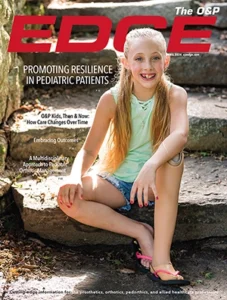Traumatic injury, including limb loss, can negatively affect quality of life, both physically and mentally. The NICE draft recommendation advises that the rehabilitation needs of the injured person should be assessed and discussed with the person and their family at an early stage of recovery. The injured person should be encouraged to think about rehabilitation goals, which can be used to inform medical or surgical treatment options. Short- and long-term goals should be agreed upon between the injured person, their family members or caregivers, and healthcare professionals depending on what is important to the injured person and their aspirations. These goals should be reviewed regularly and should be flexible as setbacks to rehabilitation may occur.
The draft guideline recommends that healthcare professionals assess the impact of a traumatic injury using a person-centered and individualized approach throughout rehabilitation, as the severity of an injury does not necessarily reflect the complexity of their needs.
“Improved survival rates following major trauma has led to an increased need for rehabilitation services,” said Paul Chrisp, PhD, director of NICE’s center for guidelines. “Traumatic injury can cause huge disruption to people’s lives, but effective rehabilitation can really help them to get back to the best possible level of function and independence. Whatever the injured person’s goals, if that means being able to go back to work or play their favorite sport again, or to be able to share a meal with their family, it’s important that the right support is in place to allow them to achieve these aims.
“Coordination and communication between the various services supporting the injured person’s rehabilitation is key, and we hope these draft recommendations not only help practitioners to deliver high quality care, but also supports consistent care across the country.”
The draft guideline outlines how to develop a rehabilitation plan and how to monitor progress against the plan. The recommendations advise assigning a named rehabilitation coordinator or key worker to oversee the injured person’s care while they are in the hospital.
When the injured person is discharged from the hospital their needs should be reassessed and the rehabilitation plan reviewed. They should be provided with a single point of contact at the hospital for information, help, and advice for a limited time period, for example three months. If the injured person consents, family members and carers should be actively involved in the transition to outpatient and community services.
To read the draft guideline, visit the NICE website.
To read more about O&P rehabilitation services in the United States, see “O&P Rehabilitation Research Thrives At The Federal Level,” and “Coordinating Care From Amputation Through Rehabilitation” in The O&P EDGE.




